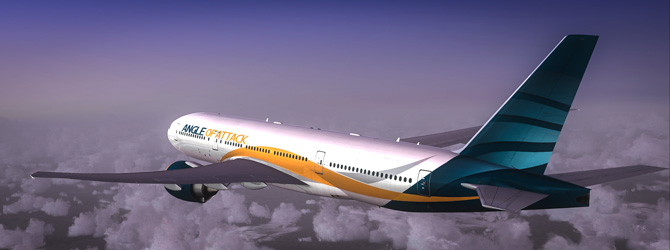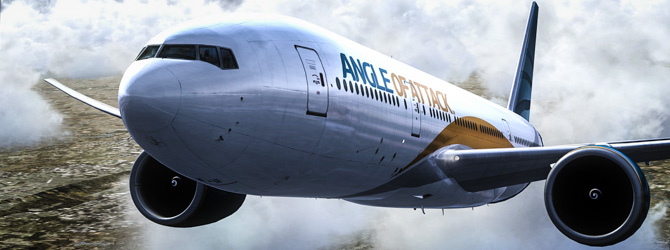

In that manual, you have a graph in which you can calculate the maximum t/o weight depending on the OAT, the pressure, the wind, the runway length and the slope. To calculate the assumed temperature for an airport, you need a document called FPPM (Flight planning and Performance Manual) which is unfortunately not provided by PMDG. If you don't enter any assumed temperature, the FMC will calculate the thrust based on the actual outside air temperature measures by the probes. The higher the temperature, the lower the thrust. The idea behind the assumed temperature thrust is that the thrust is calculated based by the FMC based on the temperature entered or measured. Here is an attempt to answer your question.

#Pmdg 777 fmc tutorial software#
This can either be done manually with the aid of performance tables and a Vital Data Card, or a piece of software such as TOPCAT can do the calculations for you. So entering a temperature above ISA +15 will result in the engines commanding a lower N1 corresponding to the lower thrust you would get at that higher temperature.Īs for what temperature to enter - this is a calculation that needs to be done based on a number of factors including the length of the runway, obstacles, the real outside air temperature, QNH, wind, takeoff weight and configuration (flaps, packs on/off etc). if the engine is rated for 90,000lbs of thrust this is what you will get - up to ISA +15. As noted, most engines are 'flat rated' - i.e.

So it follows that if you rotate the N1 fan at a given speed (let's say 100%), the amount of thrust created will decrease if you increase the temperature (and thus decrease the density) of the air going in.Įntering an assumed temperature that is higher than the real temperature fools the engine in to only producing the rated thrust for the given temperature. Hot air, naturally is less dense than cold air. Denser air contains more molecules for a given volume Newton's laws dictate that the more molecules (and thus greater mass) of air you throw out the back, the more thrust you get. To deal first with how Assumed Temperature works Ī jet engine works by taking a bunch of air molecules in at the front, accelerating them and throwing them out the back. How do you calculate this? I'm so lost and I'm probably overthinking this but it's really bugging me. So if the outside air temperature (OAT) in Boston at Logan (KBOS) is let's say -10 degrees celsius, then what number would I put in the "SEL" (LSK L1) button of the THRUST LIM page? If the temperature is higher than this, the air becomes less dense and the engine produces less thrust at the same N1 setting." According to the tutorial it states: " The engines are designed to produce their rated thrust at an actual outside air temperature of 30 degrees celsius (ISA + 15C).

Let's pretend I'm taking off from some place rather cold like Boston, Massachusetts where the temperature right now is roughly between -23 to -10 degrees celsius on a consistent basis every day in the winter. I don't understand why this would be and where he got this number from. In the PMDG 777 Tutorial 1.0 it shows entering a temperature of 65 degrees celsius. On the THRUST LIM page in the FMC, you need to enter in an assumed temperature for the thrust rating of the engines for takeoff and the initial climb. I've read the documentation so many times regarding this but I still don't understand it.


 0 kommentar(er)
0 kommentar(er)
